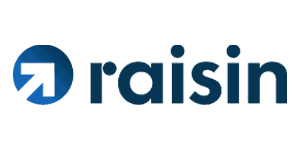
Customer Loyalty and the Competition for Stable Funding
Brought to you by Raisin

It’s more important than ever for banks to compete on value and increase client loyalty.
Banks are increasing loan loss reserves to counteract eroding credit quality at the same time they are also contending with competitors’ high-yield savings accounts, which pay more than 0.60% APY in some cases. August’s consumer savings rate was 14%, albeit down from a high of nearly 34% in April.
It’s easy to lose sight of the importance of competing on value in this environment, even as cost-effective ways to retain funding are more necessary than ever.
When I managed cash and investment products for banks and brokerage firms, I was regularly asked to increase the interest rate we offered our clients – often because a large client was threatening to leave the firm. My response then is still relevant today: A client relationship is more than an interest rate. In fact, multiple research studies I’ve sponsored over my career showed that when it comes to their cash deposits, the majority of clients rank safety, in the form of deposit insurance protection, first; access to their cash when they need it second; and interest rate third.
It’s a given that the majority of banks are members of the Federal Deposit Insurance Corp. and have debit cards linked to savings accounts, making clients’ funds accessible. According to the FDIC, the current average national savings rate at the end of October was 0.05% APY.
I ask potential bank partners the following key questions to understand what their strategy is to retain the excess deposits as long as possible on their balance sheet.
- Does your bank create value with relationship pricing?
- Does your institution have an easy-to-navigate website and app?
- Can clients easily open an account online?
- Does your bank offer a broad range of flexible products that meet clients’ cash needs?
- When was the last time your institution launched an innovative savings product?
We’ve learned a lot about building more value for customers from successful consumer technology over the last few decades. Decisive points include that product attributes should be intuitive for use by front-line sales, be easily incorporated into a bank’s online experience, and allow clients to co-create a banking experience that meets their individual needs.
What would tech-inspired, easy-to-use, personalized products look like in retail banking?
Example 1:
A savings ladder strategy can meet clients’ needs for safety and access to their cash. This approach gains crucial additional value, however, when a bank deploys technology linking all the steps in the ladder into one account. Clients want to see what they’re getting in advance too: to test different inputs and compare potential strategies easily prior to purchasing. Implementing new, individualized products should be as easy as clicking on the Amazon.com “Buy” button.
Example 2
In the face of economic uncertainty and job losses, many clients may look for flexibility. Some consumers will want to readily access cash for their already-known needs – for instance, parents with college-age children, small businesses, or homeowners with predictable renovation schedules. Advanced software lets banks meet these needs by creating customizable, fixed-term deposits with optimized rates that allow for flexible withdrawals.
Banks can consider adding value to their product offering beyond rate with time-deposit accounts that are easy for clients to implement and designed to meet their specific cash needs and terms. A product with such attributes both meets clients’ individualized needs and creates value in a competitive field.
Example 3
If a client prefers safety with some exposure to the market upside, a market-linked time deposit account also helps banks offer more value without increasing rate. An index or a basket of exchange traded funds can be constructed to align with your client’s values, which is especially attractive in today’s market. Consider the appeal of a time deposit account linked to a basket of green industry stocks, innovative technology companies, or any number of options for a segment of your clients. Offering products that align with your client’s broader worldview allows you to build a more holistic, longer-lasting relationship with them.
The ability to create customer value beyond rate will ultimately determine the long-term loyalty of banking clients. Fortunately, we can look to technology for successful models that show how to add value through simple, intuitive, and individual products. At the same time, tech already has many solutions, with software and IT services that banks can access to meet their clients’ personal needs, even at this challenging moment. Innovation has never been more relevant than now – as banks need to secure their communities, their client relationships, and their funding in a cost-effective manner.


